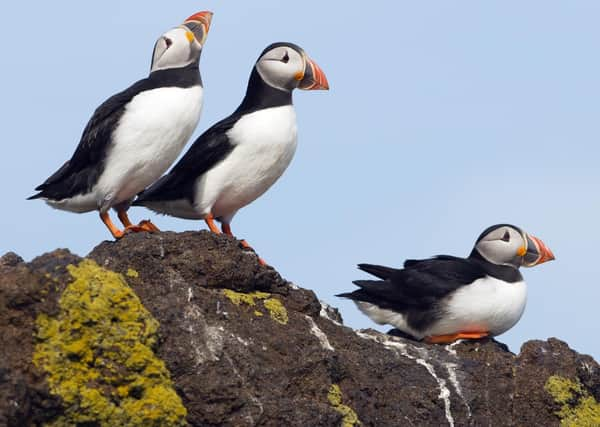Parts of the Outer Hebrides are included in latest SPA notice


The long-awaited declaration of ‘Special Protection Areas’ (SPAs) will safeguard some of the places that thousands of birds rely on for food and shelter in Scotland’s seas.
The announcement comes after extensive scientific scrutiny and consultation where the proposals received wide public support. However, RSPB Scotland has raised concerns over proposed areas in Orkney that are missing from the Scottish Government’s statement despite meeting the criteria for selection.
Advertisement
Hide AdAdvertisement
Hide AdThe west coast of the Outer Hebrides are among the special areas of Scotland’s coast and seas selected for supporting internationally significant numbers of birds.
In Spring and summer, the seas around St Kilda support more than 600,000 pairs of seabirds, most of which breed on St Kilda – the largest and oldest seabird colony in western Europe and one of the most important in the whole North Atlantic.
The areas that are now classified as SPAs are zones of high productivity of fish and other small marine organisms. This makes these waters important feeding grounds for many seabirds – more than 7% of Britain’s breeding gannet feeds in the Seas off St Kilda along with large numbers of other iconic seabirds such as fulmars, puffins and the nocturnal storm-petrels.
The West Coast of the Outer Hebrides SPA stretches from the west of Barra up to the south of Lewis and Harris. The site is critical for divers, attracting the UK’s largest concentration of wintering great northern divers and one of only three large populations of black-throated divers. In the summer, the rich feeding grounds support an important breeding population of red-throated divers. Important numbers of eiders, long-tailed ducks, red-breasted mergansers and Slavonian grebes all also feed in these foraging grounds.
Advertisement
Hide AdAdvertisement
Hide AdRobin Reid, Senior Conservation officer for the RSPB on the Outer Hebrides said: “Today’s announcements are very welcome news and much needed to protect our internationally important seabird populations, many of which are in decline. These marine Special Protection Areas are essential in order to safeguard the feeding grounds of seabirds that nest on St Kilda and other seabird islands. Seabirds typically spend a small proportion of their time onshore and are dependent on rich foraging areas across large areas of ocean to survive and breed.”
“The new Marine Protection Area in North-east Lewis will also benefit seabirds by protecting important sandeel habitat as well as Risso’s dolphins. Sandeels are an important prey species for many seabirds that breed on the Outer Hebrides including puffins and arctic terns. Together these sites will protect large marine areas around the archipelago, including an extensive area of coastal water running up the west coast which is important for breeding and wintering divers and sea duck.”
The Scottish Government is required by law to select the most important places for birds on land and sea for special protection. Until now only breeding colonies had been given the SPA status.